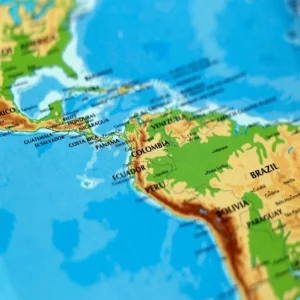Latin America’s markets are undergoing shifts due to a mix of economic volatility, supply chain disruptions, and political changes.
Asia deems itself safer, while Latin America confronts higher uncertainties, recognizing Uruguay as a low-risk country akin to the U.S. and Canada.
Other major economies, like Brazil and Mexico, are categorized as medium-risk.

Guyana faces particular challenges due to a territorial dispute with Venezuela over the Essequibo region, marking it as a sensitive risk.
These ratings help gauge the likelihood of companies in these countries fulfilling their contractual obligations.
Globally, the energy and raw materials sectors are experiencing downturns due to falling commodity prices, impacting profits.
Brazil’s Economic Outlook
Brazil’s risk rating has improved following positive economic reforms and a stable political climate.
Additionally, green incentives are attracting significant foreign investment in Brazil’s automotive sector.
Mexico’s prominence in nearshoring and friend-shoring has surged, making it the largest supplier to the U.S., especially in automotive industry.
Still, political unrest and governmental approaches to critical sectors could affect its competitive edge.

